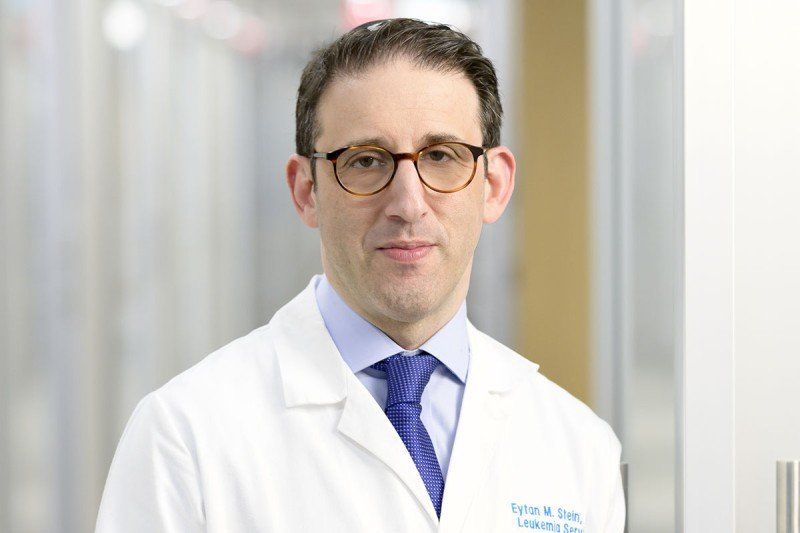Cancer and neoplasms
Menin Inhibitors Show Promising New Approach for KMT2A-Mutated Leukemia
Eytan M. Stein, MD
Although new therapies have improved outcomes for many patients with high-risk leukemia, some patients are less responsive to novel therapies and optimized chemotherapy approaches. Patients with acute leukemia with KMT2A rearrangements are a population with a pressing need for better treatment options.
“In 2023, the standard regimens for patients with KMT2A rearrangements are no different than the regimens we get for other patients with acute myeloid or acute lymphoblastic leukemia,” said Eytan M. Stein, MD, in an interview with The SOHO Daily News. “There isn’t a targeted therapy or special things that we do for these patients, and that’s probably why their outcomes aren’t so great.”
According to Stein, KMT2A rearrangements occur in approximately 5% to 10% of patients with acute myelocytic leukemia (AML), and a slightly higher percentage of patients with acute lymphoblastic leukemia (ALL). They are considered to have high-risk disease that is likely to not respond to intensified chemotherapy regimens. A particular type of ALL with a poor prognosis affecting infants harbors a KMT2A rearrangement.
Now advances are being seen with the introduction of menin inhibitors. “The reason we’ve been able to make these advancements is because it was discovered a number of years ago that a protein called menin is intricately involved in the pathogenesis of acute leukemia with a KMT2A rearrangement,” explained Stein, who is chief of the leukemia service and director of the Program for Drug Development in Leukemia, Division of Hematologic Malignancies, at Memorial Sloan Kettering Cancer Center in New York, New York. Stein spoke on the current state of menin inhibition in KMT2A-rearranged ALL at 11th Annual Meeting of the Society of Hematologic Oncology (SOHO 2023).
Menin inhibitors block the interaction between menin and the KMT2A protein also known as MLL, which is associated with pathogenesis of these leukemias. In the first-in-human phase 1/2 AUGMENT-101 clinical trial (NCT04065399) where patients with relapsed/refractory KMT2A-rearranged or NPM1-mutant acute leukemia received revumenib (SNDX-5613; Syndax), a potent and selective oral menin inhibitor, the overall response rate (ORR) was 53% (32 of 60 evaluable patients).1 In the phase 1/2 KOMET-001 trial (NCT04067336), ziftomenib (Kura Oncology) was associated with an ORR of 42% in 24 patients enrolled in phase 1b.2 Several other menin inhibitors are also being investigated in ongoing early-phase trials that have not reported results.
Stein said that a key takeaway from these trials is that menin inhibitors lead to very deep responses. “Even the most sensitive methods we have to detect acute leukemia—flow cytometry and next-generation sequencing—were unable to detect these abnormalities in the patients who are in very deep remissions,” he said. In AUGMENT-101, the rate of complete remission with partial hematologic recovery (CR/CRh) was 30%, and 14 of 18 patients (78%) had undetectable minimal residual disease (MRD).1 In KOMET-001, the CR/CRh rate was 33% with a 75% rate of MRD negativity, all in patients who received 600 mg of ziftomenib, the higher of 2 dose levels investigated in phase 1b.2
Advertisement
Another area of focus for Stein is exploring resistance to menin inhibitors, including how resistance mutations develop in ways that prevent the drug from binding to the receptor. His presentation will address why resistance develops and possible ways to overcome these resistance mechanisms. “One of the unmet needs with menin inhibitors specifically is figuring out how to overcome this resistance,” he said.
In terms of the safety of menin inhibitors, the trial of revumenib showed grade 3 prolongation of the QT interval to be a dose-limiting toxicity. The incidence of grade 3 QT prolongation was 10% at dose levels at or below the maximum tolerated dose.1 Stein said that although this adverse event (AE) was seen, it did not lead to any significant cardiac arrhythmias.
Both revumenib and ziftomenib were associated with differentiation syndrome, an on-target AE. “Differentiation syndrome is a condition that develops when leukemia cells are changing or differentiating into normal, healthy neutrophils,” Stein said. “Patients can get fluid accumulation in their lungs and other places in their body, which can in certain cases can be fatal.” Reported manifestations of differentiation syndrome included bone pain or arthralgia, pericardial effusion, pleural effusion, pulmonary infiltrates, increase in creatinine, rash, edema, and pyrexia.1
In the AUGMENT-101 trial, 11 patients (18.3%) had differentiation syndrome associated with revumenib, all grade 2, which were resolved, with only 1 case leading to 1 day of dose interruption.1 In KOMET-101, differentiation syndrome of grade 3 occurred in 4 (17%) of the 24 patients treated in phase 1b.2 Seven patients had any-grade differentiation syndrome, one of whom was a patient with a KMT2A rearrangement who had a fatal AE. In patients with differentiation syndrome, the ORR was 75%. The investigators reported that after guidance was implemented for differentiation syndrome, severity of this AE during treatment declined.2
Multiple approaches to using menin inhibitors are being investigated. Combining menin inhibitors with standard-of-care regimens for acute leukemia in the front line could have a greater impact. “I think those will be practice-changing,” Stein said. “I think that there’s a very good chance that by adding menin inhibitors to intensive chemotherapy and other standard-of-care therapies, we’re going to see better responses than what we see [now].” For example, studies are planned for combining revumenib with chemotherapy in pediatric patients with ALL (NCT05761171) and in adults with AML (NCT05886049).
Another combination approach is pairing menin inhibitors with small molecule agents such as FLT3 inhibitors. Stein said there are a number of patients with co-occurring FLT3 and KMT2A mutations who could benefit from targeting both at once. This synergistic effect has been observed in in vivo animal trials.3
No menin inhibitors are approved for use yet, but there is hope that these promising trial results will benefit patients with KMT2A rearrangements who greatly need new therapies. “There’s a huge unmet need because these patients don’t do very well [in terms of] their overall survival. At 5 years, it’s probably in the range of 30%,” Stein said.

